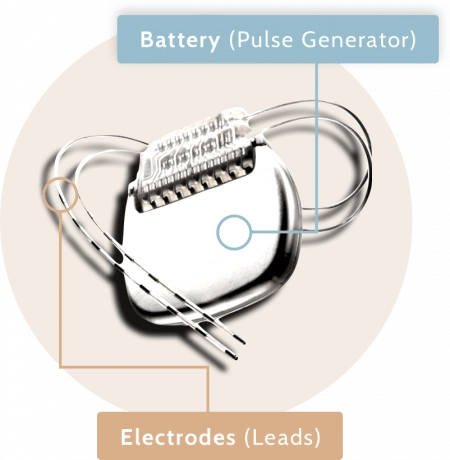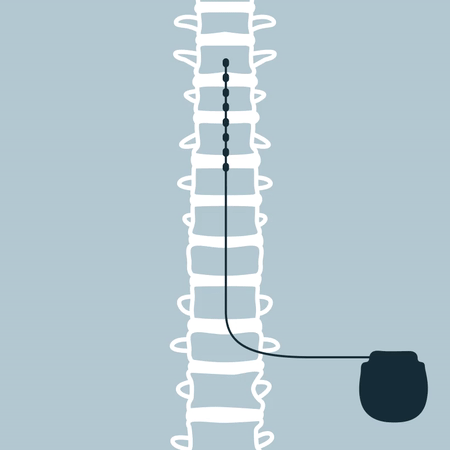Thank you! Based on your results
You Could Be a Good Candidate for
Neuromodulation
Schedule your visit today to receive a precise diagnosis and treatment plan from our award-winning physicians!

Thank you! Based on your results
Schedule your visit today to receive a precise diagnosis and treatment plan from our award-winning physicians!
However, if you are experiencing pain, you should still consider seeing a pain specialist. Pain specialists treat all types of pain. You can schedule a visit by calling 800-340-PAIN (7246).
Neuromodulation
Research shows that neuromodulation results in meaningful pain relief in 50-70% of well-selected chronic pain patients that have failed to respond to other treatments.
Our goal is to reduce or eliminate the reliance on opioids for pain management.
This procedure is covered by most commercial insurances and Medicare.

The best place you can go to for pain relief! The doctors truly listen and take the time to explain everything to you so you understand and are comfortable.

Always nice to come here and be put at ease by the friendly staff. I go here for injections in my back/hips and the doctor and his team are genuinely interested in helping. So happy I found them! Thank you.

Amazing doctors, all with incredible bedside manner. They truly treat you as a person, with real life issues. They also have a fantastic helpful staff. You can tell they are interested in fixing the problem. I for one, was on another treatment regiment, and nervous to switch, due to fears of withdrawal. Well, Dr Prunkis went over all options, and WE decided what was best treatment moving forward. I felt at ease, which isn’t always the feeling when dealing with pain doctors. They have many convenient locations. They have won many peer awards, which is based on where a doctor would go for himself/herself or family member for pain. It’s well worth the time for a consultation.

All doctors are friendly but professional. Staff are courteous, helpful and empathetic. All of them are really interested in the patients problems and comfort. Highly recommend Illinois Pain Institute. They work well with insurance. They use light sedation for procedures. You are on your way home in a timely manner.

Dr Yaacub. Is a great doctor he really listens to you and understand what your going through. He works together to find the right treatment and plan. His staff is nice and always helpful.

Dr. Bellinger is extremely caring about her patients and looks into every possible reason as to why the symptoms are being caused. You have to appreciate that now a days. I very much do, thank you.
About Neuromodulation



Free 20-minute call with a Care Coordinator
Free 20-minute call with a Care Coordinator
Free 20-minute call with a Care Coordinator
The leads are placed under the skin and next to the spinal cord. The battery back, also called a “pulse generator,” is programmed to send gentle electrical pulses through the leads to disrupt pain signals before they reach your brain.
These devices have been developed over decades, with hundreds of millions of dollars in R&D. This is not a TENS unit.


Every patient gets to “trial” a temporary stimulator for up to 1 week to see if it reduces pain and improves daily life.
The trial is a simple, outpatient procedure that takes about 30-minutes in the doctor’s office.
When you feel pain, it’s because nerves are sending pain signals to your brain. Spinal cord stimulation interrupts these pain signals so you don’t perceive them as pain. The goal of spinal cord stimulation is to:
Reduce pain by at least 50%
Improve mobility and allow daily activities
Reduce the need for pain medication
Allow patients to relax and sleep better




